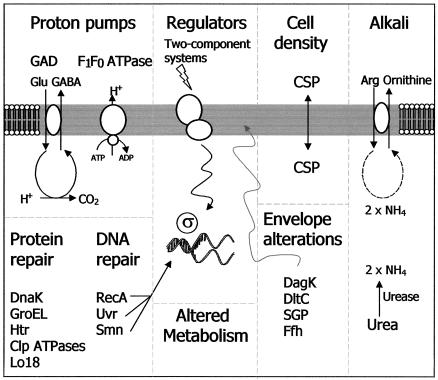FIG. 1.
Graphical presentation of the mechanisms of resistance available to gram-positive bacteria. These have been divided into eight categories, and a number of examples are demonstrated. (i) Proton pumps such as the F1F0ATPase or that utilized by the GAD system bring about an increase in internal pH. (ii) Proton repair involving chaperones, proteases, and heat shock proteins results in the protection of proteins or their degradation if damaged. (iii) DNA damaged as a consequence of a low internal pH can be repaired through the excision of errors or the restarting of stalled replication forks. (iv) The involvement of regulators such as 2CSs and sigma factors can induce minor or global responses. (v) Cell density affects cell-to-cell communication. (vi) Cell envelope alterations can protect cells by changing architecture, composition, stability, and activity. (vii) The production of alkali by the ADI or urease system increases the internal pH of the cell. (viii) Metabolic properties can be altered.

